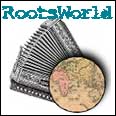 |
Nusrat Fateh Ali Khan died August 16th in London of complications from diabetes. Whle his popularity has risen of late in the west due to his collaborations with Michael Brook and Peter Gabriel, and the use of his music in popular films, his star never set in Pakistan and India, where his death was felt by hundreds of thousands of sad hearts. He was a singer of power and ecstasy. - Editor
|
The Brightest Star of Qawwali
by John Cho
Because of music's undeniable power to move the human body as well as
the spirit, religions that abhor the tendencies of the flesh have
always treated music with suspicion. Many cultures that are dominated
by such religions have developed dual musical modes, sacred versus
secular, segregating each kind to its proper place and purpose, the
church versus the dance hall, the temple versus the brothel, the "Ave
Maria" versus Madonna.
But other religions (usually the "heretical" offshoots of the major
brands or syncretic results of colonizations) have embraced the
sensual side of music in a quest for total transcendence, i.e., music
as a vehicle of transport to the gods or to enlightenment.
Practitioners of such trance music are found all over the world, from
the Sanghyang dancers of Bali to the nomadic tribe known as the
Deadheads in the continental United States. The Sufi, with more than
nine million adherents, is one of the larger religious sects that
practice such musical entrancement. Qawwali, which means
"utterance" in Arabic, is the musical medium through which the Sufis
of Pakistan and India travel toward a state of mystical bliss.
Since its inception in the seventh century, orthodox Islam has been
particularly fearful of the corrupting influence of music. Singing
and the playing of instruments were long considered sinful, and to
this day music has no place in the mosque. But perhaps it is not
surprising, given the rich roots of Arabic and Persian music that long
predate Islam, that an alternate Muslim sect embracing the power of
music was born. Sufism originated in tenth century Persia and
generated various factions, one of which was the Chisti order that
traveled 200 years later to the Indian subcontinent where the modern
form of qawwali evolved. (Another well-known Sufi diaspora
group is the whirling dervish of Sudan.)
The original qawwali repertoire of Farsi (Persian), Punjabi, and
Braj Bhasha (an old form of Hindi) has given way in recent times to
Urdu and Arabic. The text usually consists of a few lines that are
repeated over and over, with such unorthodox subjects as romantic love
and alcoholic intoxication used as metaphors for spiritual adoration
and mystical enlightenment, e.g., "The eyes of my sweetheart are so
bewitching that even the best wine of the tavern pales in
comparison."* It is no wonder that qawwali, minus the
religious interpretations, has become a staple of Indian film scores.
The typical modern-day qawwali group consists of a qawwal
(the lead singer) backed up by a harmonium, dholak (a
double-headed finger drum), tabla, plus a couple of backup
singers leading the choral response and vigorous hand claps. Often a
song will begin with a slow instrumental vamp that introduces the
melodic motif. The qawwal then meanders in with the first line
and soon the call-and-response pattern is established. Phrases are
repeated ad infinitum punctuated by sudden and furious breaks of
virtuoso coloratura singing by the leader. As the piece progresses
the tempo and volume are gradually increased thus elevating the
listeners to higher and higher states of entrancement. A seasoned
qawwal alertly monitors the audience response and adjusts the
degree of repetition and the "heat" accordingly.
By far the most famous qawwal today is Nusrat Fateh Ali Khan of
Pakistan. Since his introduction to the West in 1985 by Peter
Gabriel's WOMAD (World of Music and Dance) project, the
Shahen-Shah-e-Qawwali (Brightest Star of Qawwali) has
contributed music for the films Last Temptation of Christ,
Natural Born Killers, and Dead Man Walking, played on MTV, been
profiled by Rolling Stone, and currently has three albums on the
World Music chart. Nusrat's huge, reedy voice has even raised the
consciousness (or at least the adrenaline level) of dance floor
regulars courtesy of sampling by the English group Massive Attack. He
himself has been eager to collaborate with Western musicians and
several crossover albums have resulted.
Nusrat's father, Ustad Fateh Ali Khan, was one of the great
qawwals of his time. But in the tradition of well-intentioned but
misguided parents, he tried to persuade his son to become a doctor
instead. Nusrat had to resort to eavesdropping on his father's music
classes to absorb the fundamentals. Soon after his father's death he
joined an uncle's qawwali group; he was seventeen years old.
Fame and acclaim soon followed in Pakistan. Now at forty-six years of
age, he has transcended genre and national borders to be recognized as
one of the unique vocal treasures of the world.
By religious proscription a traditional qawwali gathering is
exclusively male. Nusrat himself believes that women do not have the
stamina required to be a master qawwal like himself. Ironically
his only child is a daughter. If she is even now eavesdropping on her
father's music lessons, we should not be surprised to see in thirty
years that the new Shahen-Shah-e-Qawwali is a woman.
Selected Discography for Nusrat Fateh Ali Khan
Traditional:
Shahen-Shah (RealWorld/Caroline)
The Day, the Night, the Dawn, the Dusk (Shanachie)
Revelation (Interra)
The Last Prophet (RealWorld/Caroline)
Crossover:
Musst Musst (RealWorld/Caroline)
Night Song (RealWorld/Caroline)
* From "Yeh Jo Halka Halka," The Day, the Night, the
Dawn, the Dusk.
JC is an atmospheric scientist by profession, but he moonlights as a
world music columnist for The San Juan Star. A returned Peace Corps
volunteer (Sierra Leone, '86-'88), he also writes fiction and travel
stories. E-mail: [email protected]
Article copyright 1996,1997 The San Juan Star, used by permission of the author



